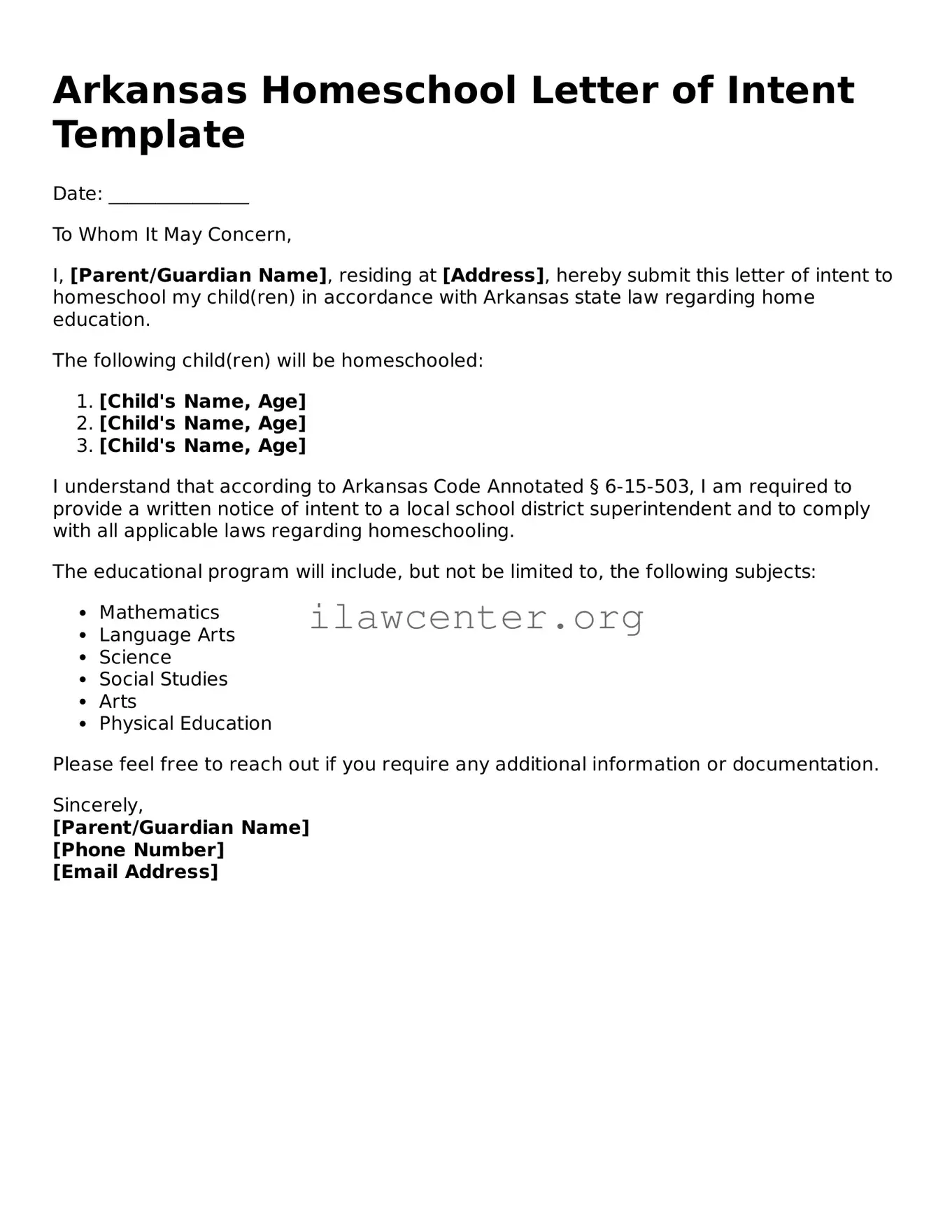Instructions on Utilizing Arkansas Homeschool Letter of Intent
Completing the Arkansas Homeschool Letter of Intent form is an important step for families choosing to provide their children with a home education. After filing this form, you can expect to receive guidelines for your homeschooling journey along with any necessary follow-up from your local school district.
- Begin by downloading the Arkansas Homeschool Letter of Intent form. You can typically find it on the Arkansas Department of Education website or through local school district websites.
- Open the form and gather any required information about your child, including their full name, age, and grade level. Additionally, have your contact information ready.
- Fill out the section regarding the educational program you plan to implement. Be sure to include any relevant materials, curriculum, or methods you’ll use in your homeschooling.
- Provide your signature and print your name and date at the bottom of the form. This confirms that the information you’ve submitted is complete and accurate.
- Review the entire form for any errors or missing information before submitting it.
- Submit the completed form to your local school district. You can usually do this by mail, email, or fax, depending on the district’s submission policies.
Completing these steps ensures that you are on the right path to starting your homeschooling experience in Arkansas.
